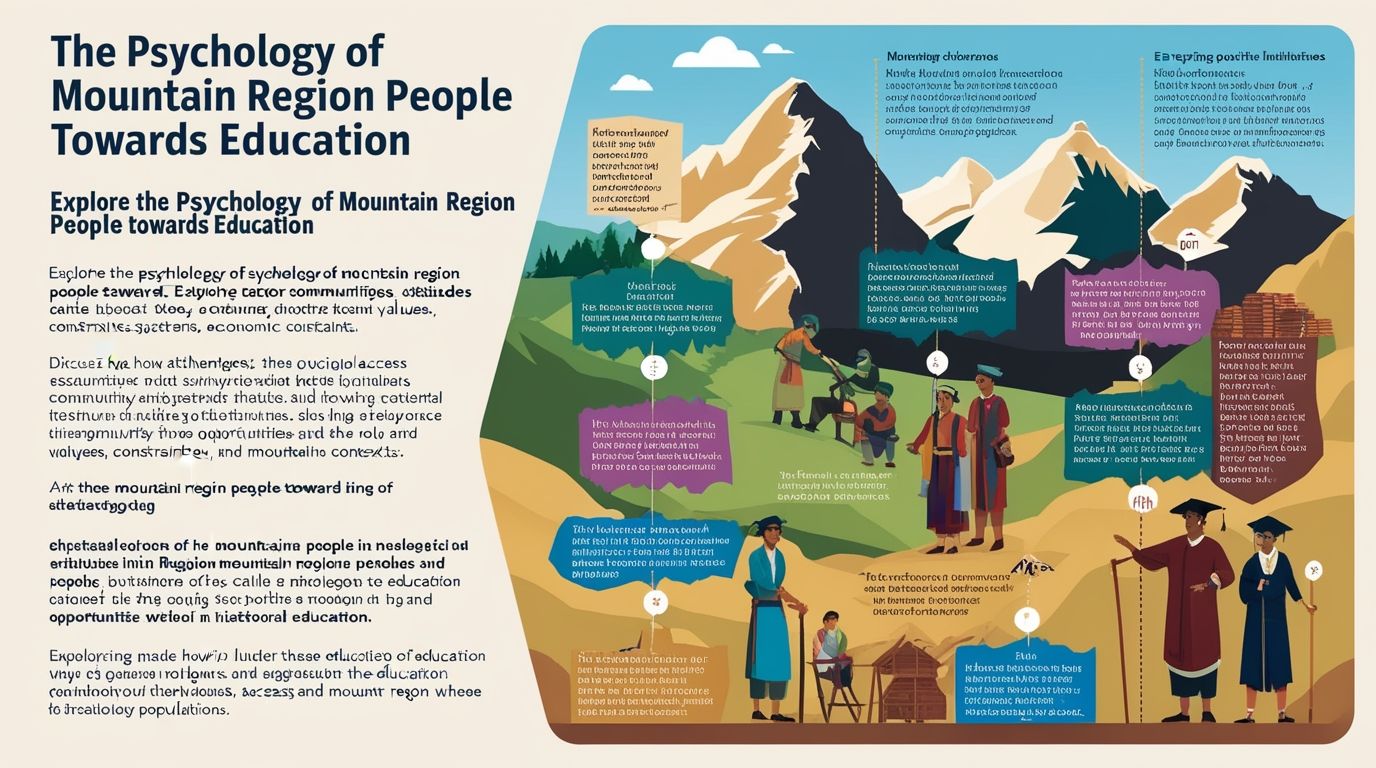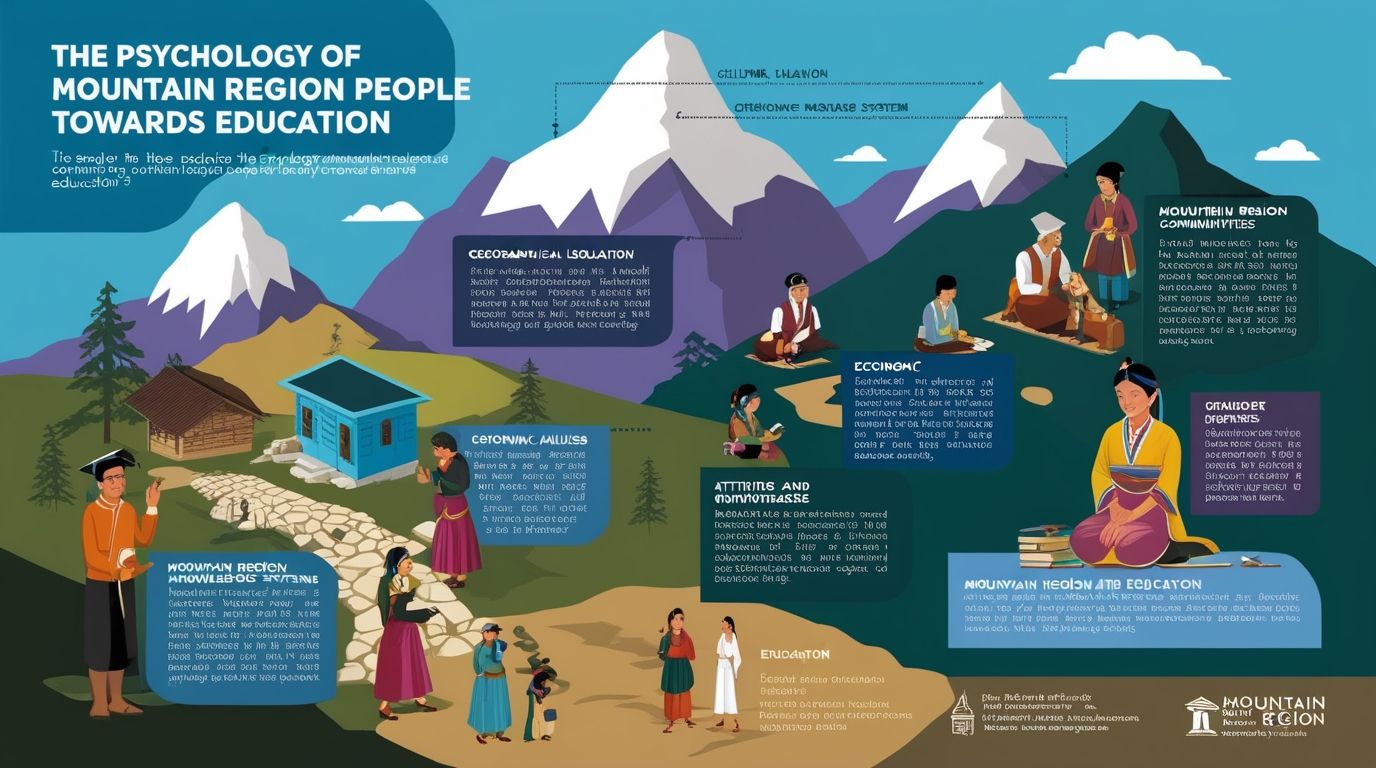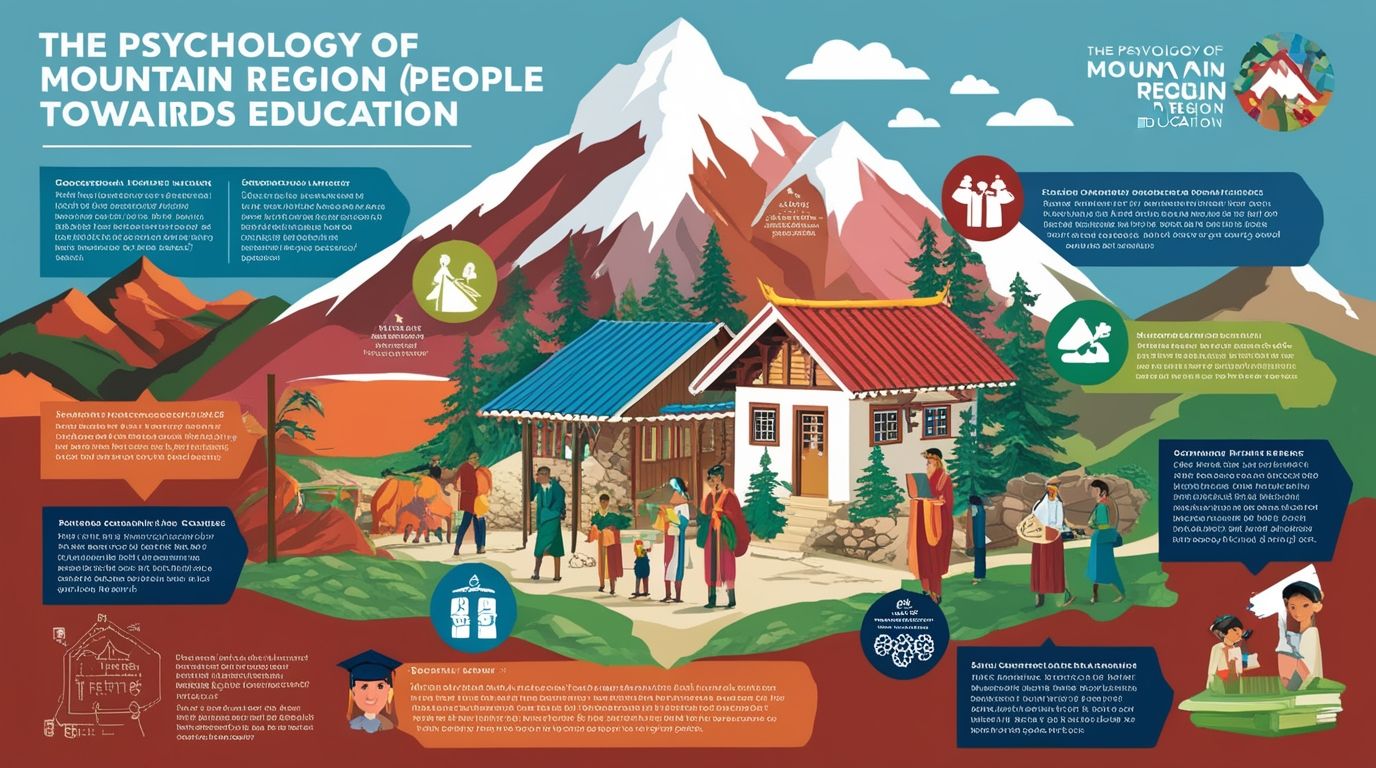Psychology of Mountain Region People Towards Education Mountain regions are known for their stunning landscapes, rich cultural heritage, and unique way of life. However, the inhabitants of these regions often face distinct challenges that shape their perspectives and attitudes towards education. Understanding the psychology of mountain region people towards education requires examining a variety of factors, including geographical isolation, cultural values, economic conditions, and historical contexts. This article explores these aspects, highlighting how they influence the educational outlook of mountain communities.
Geographical Isolation and Access to Education
One of the most significant factors affecting the psychology of mountain region people towards education is geographical isolation. Mountainous terrains can make access to educational institutions difficult, with schools often being located far from villages and accessible only through challenging routes. In many cases, children have to walk long distances, sometimes in harsh weather conditions, to attend school. This physical barrier can lead to lower school attendance rates and a general perception that education is less accessible or less important compared to immediate subsistence needs.
The lack of infrastructure, such as roads and transportation, exacerbates the challenge of accessing education in mountain regions. For many families, the logistical difficulties involved in sending their children to school can outweigh the perceived benefits of education. As a result, there may be a preference for children to contribute to household chores, farming, or other economic activities that provide immediate benefits.
Cultural Values and Traditional Knowledge
Cultural values and traditional knowledge play a crucial role in shaping attitudes towards education in mountain regions. In many mountain communities, there is a strong emphasis on traditional skills and knowledge passed down through generations. These skills, such as farming, animal husbandry, and craftsmanship, are often considered more valuable than formal education because they are directly linked to the community’s way of life and survival.
Furthermore, the educational content provided in formal schooling often does not align with the practical needs and realities of mountain life. This misalignment can lead to a perception that formal education is irrelevant or not applicable to daily living. For example, subjects taught in schools may seem disconnected from the immediate challenges of mountain environments, leading to a lack of interest or motivation among students and their families.

Economic Constraints and Opportunity Costs
Economic conditions are another critical factor influencing the psychology of mountain region people towards education. Many mountain communities are characterized by low-income levels, subsistence farming, and limited economic opportunities. For families living in poverty, the opportunity cost of sending a child to school—such as the loss of potential income or labor—can be a significant deterrent.
The cost of education, including fees, uniforms, books, and transportation, can also be prohibitive for many families in mountain regions. Even when education is technically free, the associated costs can be a substantial burden. As a result, education may be deprioritized in favor of meeting basic needs like food, shelter, and healthcare. The perception that education is a luxury rather than a necessity can further discourage investment in schooling.
Gender Disparities in Education
Gender disparities are often pronounced in mountain regions, affecting attitudes towards education for girls. In many mountain communities, traditional gender roles and cultural norms dictate that girls are responsible for domestic chores, caring for younger siblings, and other household duties. These responsibilities can conflict with school attendance, leading to lower enrollment and retention rates for girls compared to boys.
Additionally, concerns about safety, particularly in remote areas, can further limit girls’ access to education. Parents may be reluctant to send their daughters to schools that are far away or perceived as unsafe. These factors contribute to a mindset that prioritizes boys’ education over girls’, perpetuating gender inequalities in educational attainment.

Historical Context and Legacy of Colonialism
The historical context of education in mountain regions, including the legacy of colonialism and the imposition of foreign educational models, also plays a role in shaping current attitudes. In many cases, formal education systems were introduced by colonial powers or external governments, often with curricula that reflected the values and interests of those in power rather than the needs of local communities.
This legacy can create a sense of alienation or distrust towards formal education, as it may be viewed as an external imposition rather than a community-driven initiative. Additionally, the historical marginalization of mountain communities in national development policies can contribute to a perception that education is not a priority for the government, further diminishing its perceived value among residents.
Positive Shifts and Emerging Trends
Despite the challenges, there have been positive shifts in the attitudes of mountain region people towards education in recent years. Increased awareness of the importance of education for social mobility, economic development, and improved quality of life is changing perceptions in many communities. Non-governmental organizations, community-based initiatives, and government programs have also played a role in promoting education in mountain regions.
Innovative approaches, such as mobile schools, community learning centers, and digital education platforms, are helping to overcome some of the logistical barriers to education in mountainous areas. These initiatives make education more accessible and relevant to the needs of mountain communities, helping to bridge the gap between traditional knowledge and formal schooling.
The promotion of education that integrates local culture, languages, and traditional knowledge has also been shown to improve engagement and relevance. Programs that involve community members in the educational process, such as involving local elders as teachers or incorporating indigenous knowledge into the curriculum, can create a more inclusive and supportive learning environment.
The Role of Technology in Expanding Access
Technology is increasingly being recognized as a potential game-changer for education in mountain regions. With the advent of digital platforms, online learning, and mobile technology, there is an opportunity to bring education directly to remote communities. While challenges such as limited internet connectivity and access to devices remain, efforts are being made to bridge these gaps through solar-powered devices, offline content, and community-based technology hubs.
Educational technology can also provide flexible learning opportunities that accommodate the unique lifestyles of mountain region people. For example, digital resources can be accessed at times that fit around agricultural cycles or other community activities, reducing the conflict between education and traditional livelihoods.
Conclusion
The psychology of mountain region people towards education is shaped by a complex interplay of geographical, cultural, economic, and historical factors. While challenges such as isolation, economic constraints, and cultural values can create barriers to education, there are also opportunities for positive change. By addressing the unique needs of mountain communities and making education more accessible, relevant, and inclusive, it is possible to shift perceptions and improve educational outcomes.
Empowering mountain region people with education that respects and incorporates their cultural heritage while equipping them with skills for the modern world is key to unlocking their full potential. As attitudes continue to evolve, education can become a powerful tool for social and economic transformation in mountain regions, fostering resilience and opening doors to new opportunities.

7 thoughts on “The Psychology of Mountain Region People Towards Education”
Comments are closed.